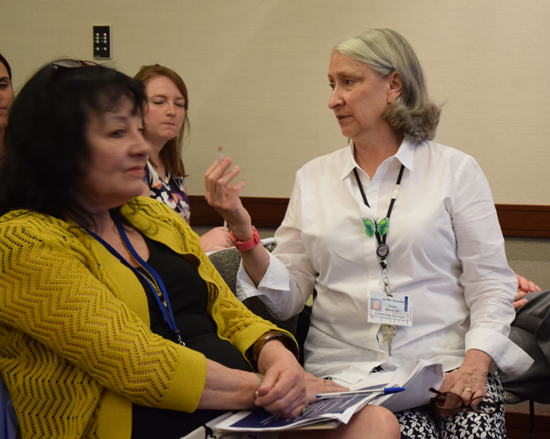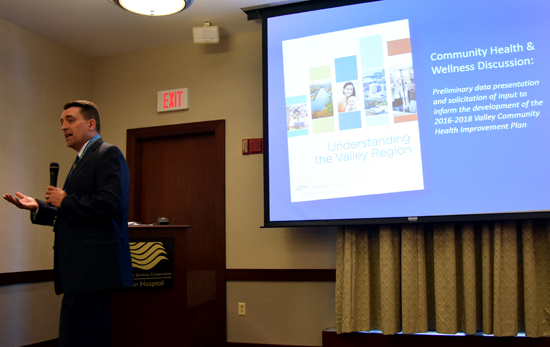
That data helped the community launch several efforts to fix the problem, and now the Valley has one of the lowest late-stage breast cancer mortality rates, according to Daun Barrett, the director of Community Outreach and Parish Nurse Program for Griffin Hospital.
The anecdote came up as officials launch the next phase of self reflection on the health of the citizens living in seven lower Naugatuck Valley towns.
Barrett was one of several community health leaders present at a discussion at the hospital Tuesday, held weeks before the most recent local data will be released and two months before an updated health improvement plan will be published.
“You can’t let your guard down,” Barrett said in an interview after the event.
The discussion was hosted by Griffin Hospital, The Valley Community Foundation and the Naugatuck Valley Health District.
Those groups teamed to create the report, along with DataHaven.
These plans help towns and regions figure out where they need to focus their efforts and money in order to improve health. They also provide information to determine if previous efforts have actually been working. The discussion Tuesday was held to highlight preliminary data and start taking comments.

John Ready, the donor services and communications officer for the Valley Community Foundation, said the complete data will be released to community leaders in a couple of weeks, and the final report will be made available to the public in October.
“It really has been community driven,” Ready told the group of about 35 health and community representatives, including state representatives Linda Gentile and Theresa Conroy.
An Overview
Ken Roberts, the director of communications and public affairs for Griffin Hospital, presented the preliminary data, but said any analysis would be part of the final report. The information comes mainly from the 2016 Valley Community Health Needs Assessment.
Roberts said that even if the numbers show that the Valley is outperforming the state average, there may be more improvement to be made.
Some highlights:
- Cancer is the leading cause of death for Valley residents prior to age 75 (according to data from 2008 – 2012). Lung cancer was the most prevalent kind of cancer during that time period.
- Income made a difference in health factors. The lowest income tier of less than $30,000 per year saw the highest rates of obesity, asthma, smoking, anxiety and depression. The only category where this trend didn’t hold true was diabetes, which saw its highest rates in the middle income tier of $30 – $100,000 per year.
- 30 percent of all adults in the Valley said they didn’t get or postponed medical care within the last year. The top three reasons include being too busy, worrying about the cost, and not thinking their problem was serious enough.
- 26 percent of Valley residents said they didn’t get dental care in the past year, higher than the state average of 23 percent.
Karen Spargo, the director of health for the Naugatuck Valley Health District, spoke before Roberts presented the data, saying the efforts of key community members and non-profits turn the report into action.
“Many communities have done a health assessment and they land on a shelf,” Spargo said. “That has never been an issue in the Valley.”
Community leaders, including Barrett and other hospital workers, gave feedback and offered opinions about the state of health in the Valley after Roberts presented the data.
Topics included access to healthy food, domestic violence, gun violence, asthma, mental illness and early childhood issues. Roberts said many of those topics would be highlighted in the full data release.The official launch and future community discussion dates will be announced in the future.
Tom Mariconda, the regional deacon for the Naugatuck Valley for the Episcopal Church in Connecticut, said he’d like to see the area food banks be part of the process.
“In a holistic way, our food banks are part of the solution,” Mariconda said.
Roberts stressed the importance of developing new health improvement plans every three years.
“The Valley has gotten better,” he said. “We need to keep pushing and decide where to put our resources.”